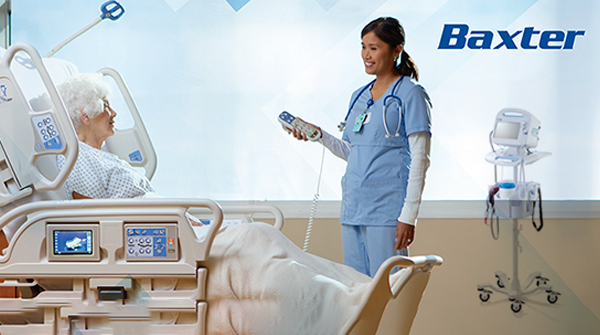Masimo Receives EU MDR CE Mark for LiDCO® Module for Hemodynamic Monitoring
9 October 2023
Masimo (NASDAQ: MASI) has announced that it has received the CE mark, in accordance with the European Union Medical Device Regulation, for its LiDCO® board-in-cable (BIC) module. This innovative LiDCO BIC module is designed to connect seamlessly with multi-patient monitoring platforms, such as the Masimo Root® Patient Monitoring and Connectivity Hub, enabling advanced hemodynamic monitoring. Clinicians can now effortlessly incorporate LiDCO hemodynamic monitoring, featuring the versatile PulseCO® algorithm, into their Root patient monitoring hubs. Notably, the LiDCO module is compatible with various pressure transducers, offering maximum flexibility to clinicians and hospitals. This marks the first solution that enables hemodynamic monitoring alongside other supported parameters without the need for a dedicated hemodynamic monitoring box. The LiDCO module supports a wide range of features, including guided protocols for fluid responsiveness assessment, comprehensive trending data, and beat-by-beat pressure analysis notifications, which can be configured for each patient on the Root monitor. The integration of Masimo rainbow® Pulse CO-Oximetry and LiDCO hemodynamic monitoring promises to provide valuable new insights into patient status.
Joe Kiani, Founder and CEO of Masimo, commented, “The introduction of LiDCO’s advanced beat-to-beat hemodynamic monitoring into the Masimo Root platform opens up the potential to offer a more comprehensive and continuous view of cardiac output (CO) and oxygen delivery (DO2). Existing hemodynamic monitors provide continuous blood pressure analysis but rely on intermittent data from other monitors for oxygenation, providing only half of the needed information. By leveraging both Masimo's groundbreaking noninvasive rainbow SET® Pulse CO-Oximetry parameters and LiDCO's innovative PulseCO algorithm, clinicians now have the capability to view continuous, simultaneous data for all components of a patient's oxygen delivery, including CO, stroke volume (SV), pulse rate (PR), total hemoglobin (Masimo SpHb®), fractional oxygen saturation (Masimo SET® SpO2 adjusted for dyshemoglobins, SpCO®, and SpMet®), along with automated DO2 estimation. This information can be displayed side by side, in real-time and continuously, on the high-resolution screen of the Root monitor. We are excited about the implications of this advancement for surgical and critical care patients, allowing clinicians to access real-time continuous data derived from the synergy between LiDCO and rainbow®.”
The LiDCO module is designed for easy setup and versatile operation, utilizing a patient's existing arterial line and blood pressure transducer to monitor a comprehensive list of advanced hemodynamic parameters, all powered by the robust beat-by-beat PulseCO algorithm. This approach offers quicker feedback on fluid and hemodynamic status compared to other hemodynamic monitors that rely on assumptions about vascular compliance or dicrotic notch detection. The streamlined board-in-cable design ensures seamless compatibility with the Root monitor and other multiparameter platforms, eliminating the need for an additional hemodynamic monitor in already crowded operating rooms and intensive care units.
Dr. Max Jonas, Consultant in Intensive Care Medicine and Anesthesia at Southampton General Hospital in the U.K., remarked, “The introduction of the Masimo LiDCO Module is clinically very exciting, as it will deliver dynamic hemodynamic monitoring, with a known documented positive impact on patient outcome. The ability to provide individualized goal-directed therapy with calculated global oxygen delivery using LiDCO-derived cardiac output is clinically important. In my opinion understanding the individualized physiology of a particular patient is paramount to targeted treatments. Assessing preload, contractility, and afterload using the LiDCO algorithm underpins patient management and the enhanced recovery after surgery (ERAS) process.”
Dr. Daniela Chaló, MD, PhD in Neurosciences, DESAIC, Head of Anesthesiology at Centro Hospitalar Baixo Vouga in Portugal, added, “The LiDCO monitor offers several advantages in hemodynamic monitoring. It is a plug-and-play solution, directly connected to the patient monitor or existing blood pressure transducer, without any disposables, compatible with various patient monitoring systems, helping healthcare providers to make better decisions.” Dr. Chaló continued, “The addition of LiDCO to the Root monitor – which also offers SpHb for hemoglobin monitoring and SedLine® and O3® for brain monitoring – means that all pertinent information can be available on one sole monitor. This is an extraordinary advancement for anesthesiology and intensive care. Root raises the standard of perioperative monitoring and is even bringing it to the artificial intelligence era. This is what we have all been waiting for.”
Clinical studies have demonstrated that the use of LiDCO can reduce postoperative complications, costs, and mortalities at both 30 and 180 days after surgery. In a randomized, controlled trial involving 743 patients undergoing major abdominal surgery, hemodynamic optimization with LiDCO resulted in a 20% reduction in postoperative complications, leading to an average cost savings of $530 per patient compared to control patients not monitored with LiDCO. Additionally, another study focusing on 600 emergency laparotomy patients showed a significant decrease in 30-day (from 21.8% to 15.5%) and 180-day (from 29.5% to 22.2%) mortality rates after implementing a program that included LiDCO technology.
Source: businesswire.com

